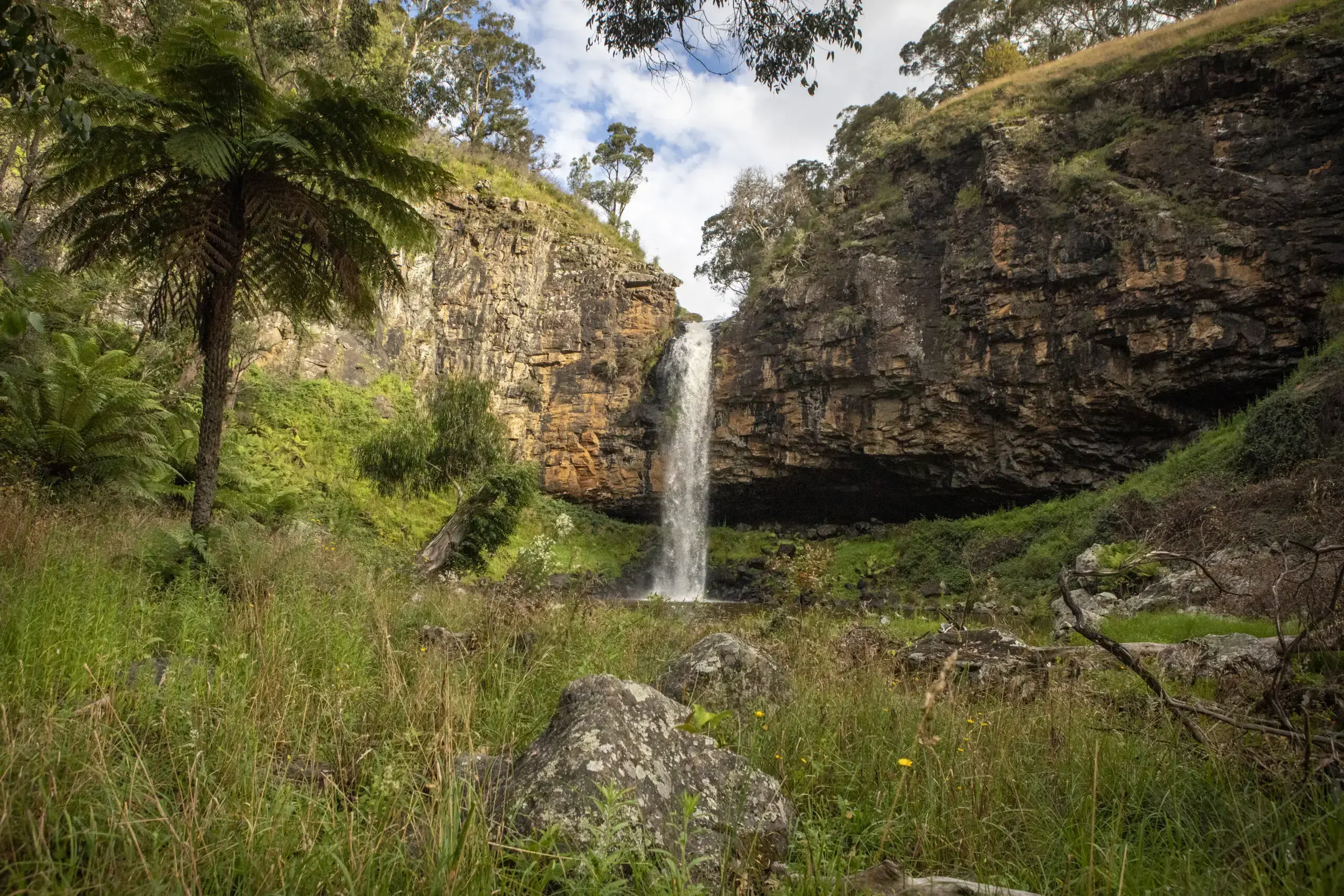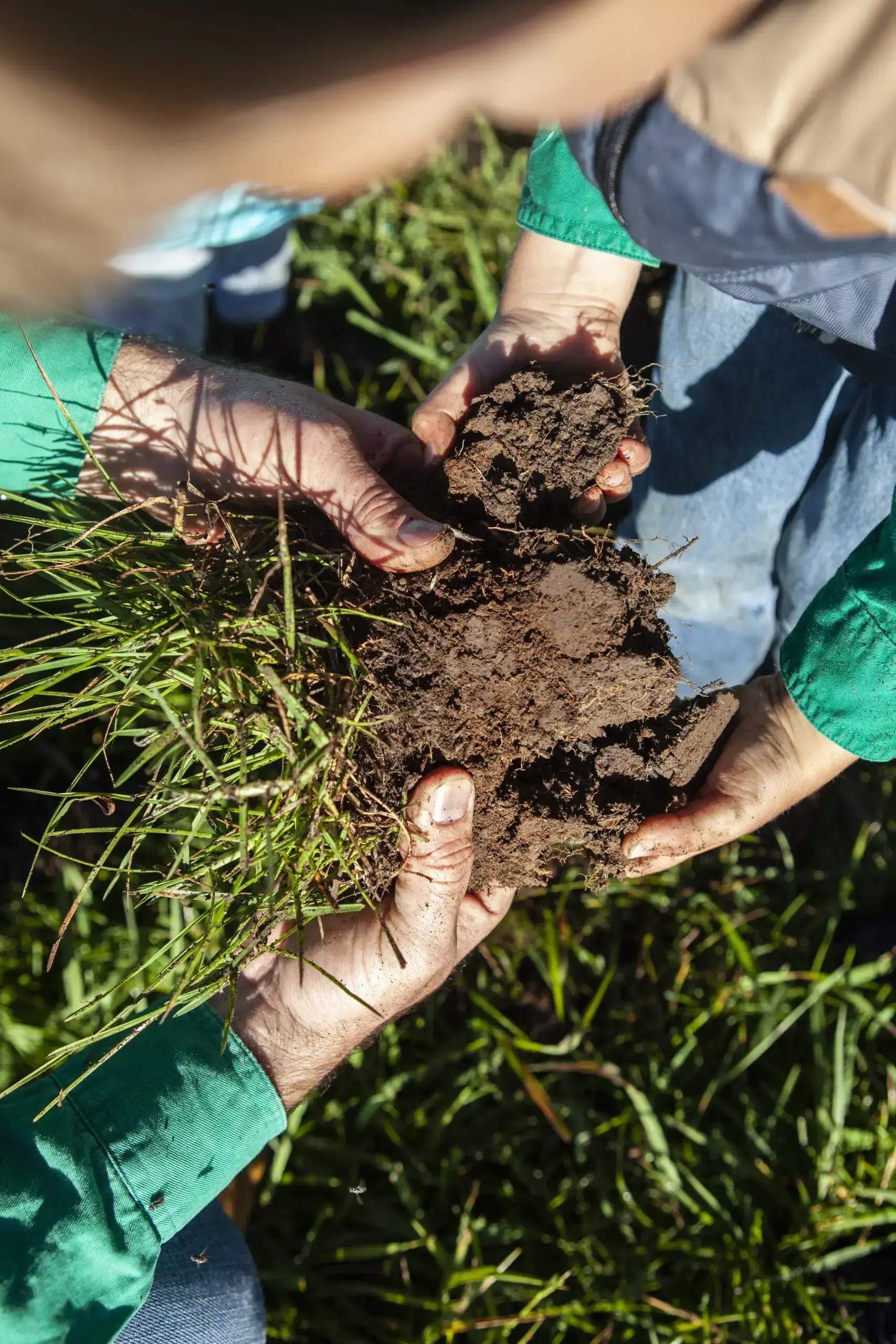‘Wilmot‘
A REGENERATIVE AGRICULTURE CASE STUDY
Alasdair Macleod’s Macdoch Ag Group purchased Wilmot, in the New England region of NSW, with the dream of finding a better way to graze. With an early career in the financial sector and a family background in farming, he saw great potential to trial and demonstrate techniques that could withstand the ravages of both natural disasters and market fluctuations. Alasdair worked closely with on-site manager Stuart Austin and others to develop innovative strategies to manage the cattle farming enterprise.
This case study summary shares the story of the transformation of Wilmot through the lens of the decision makers as they converted a conventionally managed cattle farming enterprise into a highly efficient demonstration site.
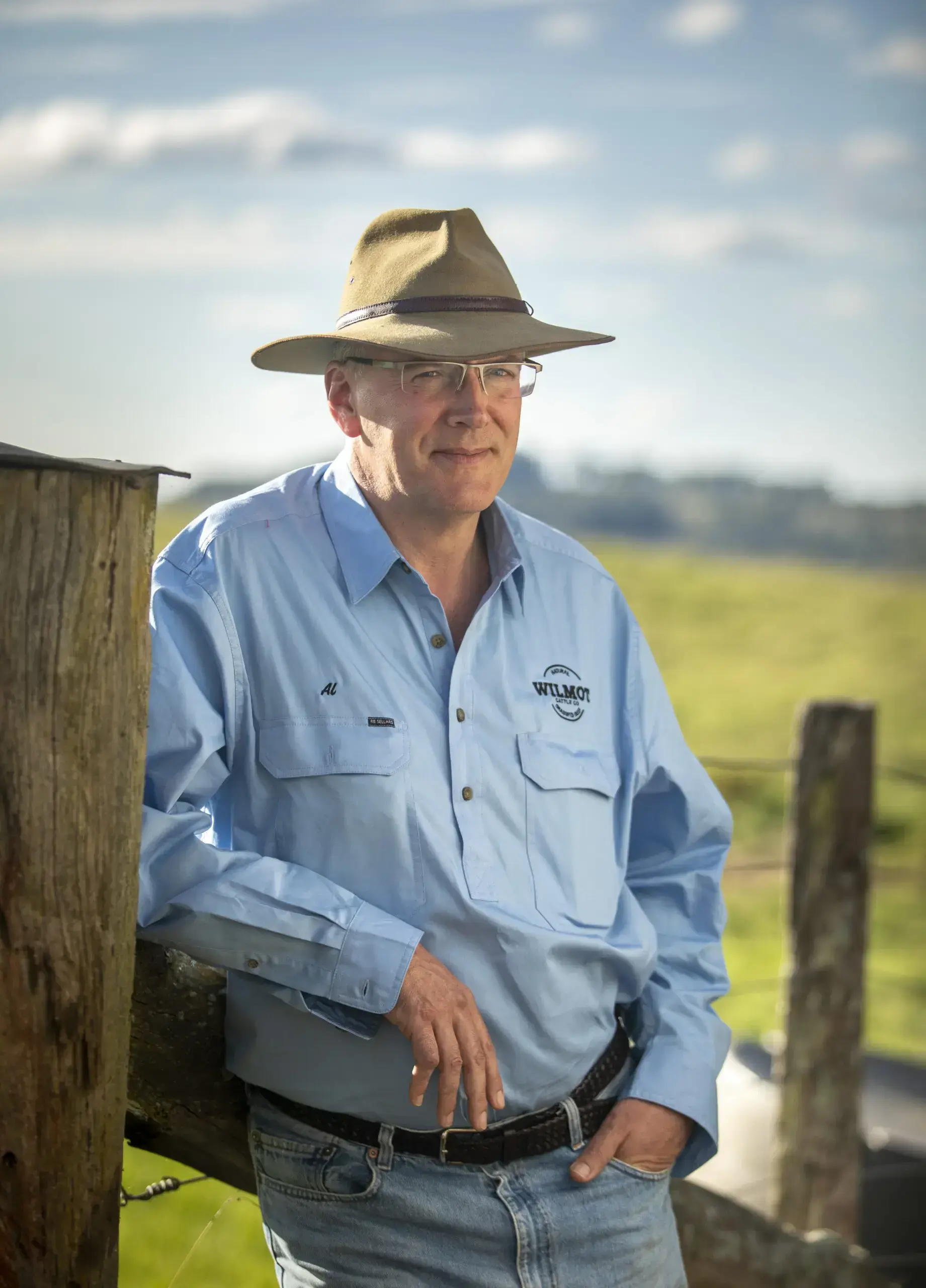
Alasdair MacLeod
Photo credit: Mike Terry
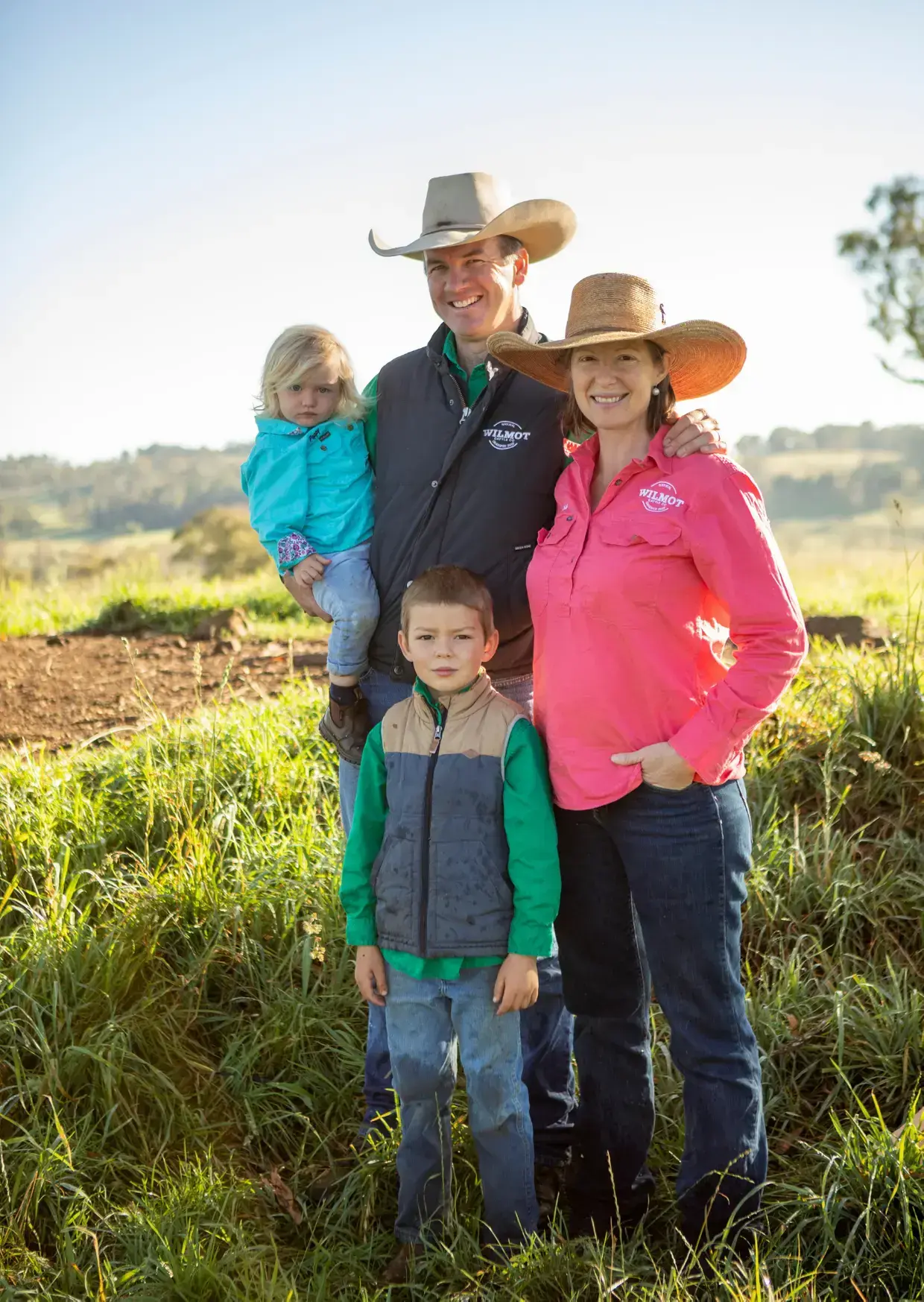
Stuart Austin and Trish Cowley
Photo credit: Mike Terry
Hernani, New England NSW
FARM FACTS
ENTERPRISE TYPE: Cattle Trading, Grass-fed beef, Soil Carbon sequestration and monetisation.
PROPERTY SIZE: 1854 ha
LOCATION: Hernai, New England NSW
ANNUAL RAINFALL: 1180mm
ELEVATION: 1080-1270m
AGRO-CLIMATIC REGION: Temperate cool season wet
SOIL: Uniform texture earths (Kandosols), texture-contrast non-sodic soils (Chromosols), structured soils (Dermosols) and structured, iron-rich soils (Ferrosols)
SOCIAL STRUCTURE: Trades as ‘Wilmot Cattle Company’, with a remote owner (Alasdair MacLeod) and on-site General Manager (Stuart Austin)
MOTIVATION FOR CHANGE:
- The need to find better ways of farming, particularly for drought resilience
- The desire to demonstrate the potential of well-managed grazing for financial, productive and environmental gains e.g. carbon sequestration
- The need to find a stable and rewarding livelihood with a sense of agency
INNOVATIONS
- Converted from set stocking under conventional grazing practices to time controlled rotational grazing practices
- Development of cloud-based grazing management tool
- Marketing of carbon credits, for sequestering soil carbon
KEY RESULTS
- Returned a profit in 7 of the 8 years studied, versus 3 for the average farm
- Exposure of bare ground is 90% lower than that of the surrounding area
- Reached broad audiences including more than 1,500 visitors to Wilmot, numerous mentees and more than 5,000 followers on Facebook
Highlights
- The combination of Alasdair’s strategic oversight and Stuart’s on-the-ground know-how resulted in a strong partnership and a shared vision.
- Wilmot adopted innovative methods and embraced technology to better manage its grazing enterprise, including the early adoption of cloud based grazing management software, ‘Maia Grazing’. Maia has become an essential planning and decision support tool in relation to stocking rate and grazing/rest periods.
- After more than half of Wilmot burnt during the disastrous bushfire season of 2019/20, the pastures recovered, producing 6 months of feed within 6 weeks of the rain. This degree of resilience reduces the ‘pain’ during challenging times and allows the management team to work constructively and to plan for the longer term with confidence.
- Wilmot successfully demonstrates the potential of well-managed grazing operations to smooth-out the peaks and troughs commonly associated with conventional agriculture and to offer more long term security to owners/investors, managers and staff.
The Vision
“The evolution… to a more enlightened way of grazing”- Alasdair Macleod, Macdoch Ag Group
Taking over the management of a family property in Yass, during the worst period of the Millennium Drought, gave Alasdair an insight into the high-risk of conventional grazing. He investigated alternative approaches concluding that resilience through cycles might be improved by adopting time controlled grazing.
The purchase of Wilmot, in the New England region of NSW, provided an opportunity to test the theory. While the property had favourable soils for a wide range of agricultural crops and pastures, they had become compacted under the conventional farming practices of potato cropping and set stocking of cattle.
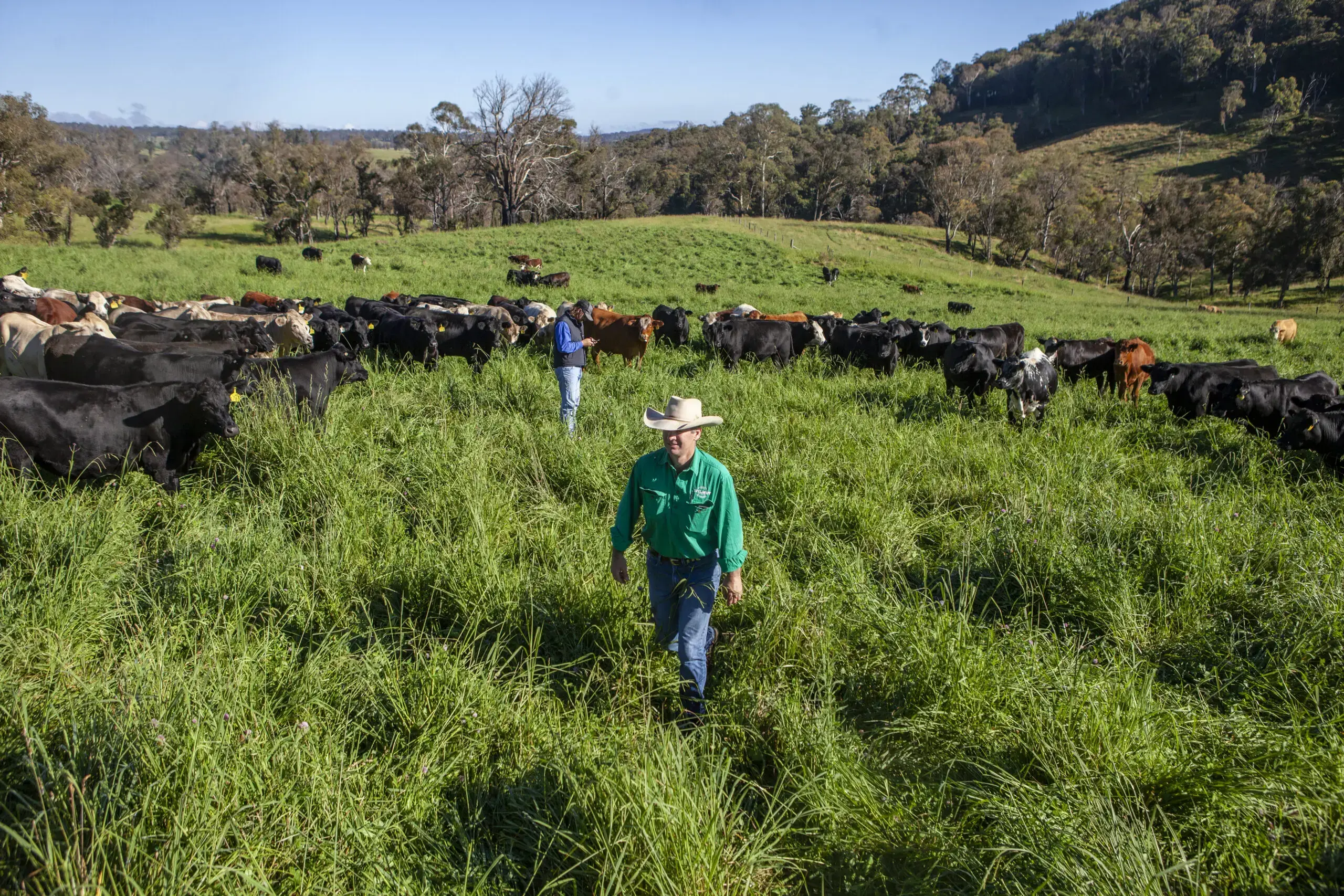
Wilmot first trialled time-controlled grazing in 2013, which is now used on the whole property. Photo credit: Mike Terry
The Approach
“as a pure financial investor you’re not making a very good financial investment if the way you’re farming is buggering up your main asset, which is your farm. You’re going to be thinking about how you farm it in such a way that you’re not just maintaining the efficacy of your asset, but you’re thinking about how you improve it”- Alasdair Macleod, Macdoch Ag Group
Alasdair initially kept the existing farm manager on, and allowed Wilmot to be managed conventionally, while he researched regenerative practices and sourced consultants who could advise on the best approach going forward.
Having come from a business background and believing strongly in innovation and efficiency, he was surprised to notice that his manager was using pen and paper charts and that his consultant continued to use excel to manage the enterprise. When a computer malfunctioned and lost all of the grazing charts, Alasdair and his consultant became inspired to create a cloud-based tool for time-controlled grazing management, called ‘Maia Grazing’. They initiated trials on Wilmot, along with several other properties, and noticed impressive results.
Photo credit: Mike Terry
The existing farm manager was unwilling to shift to a more innovative approach and a new manager, Stuart Austin, joined Wilmot, along with his family. Stuart brought on-ground experience to the role and shared Alasdair’s vision, resulting in a strong partnership. Together, they began to roll out time-controlled grazing across the enterprise, using the ‘Maia Grazing’ tool. Paddock sizes were decreased to enable effective grazing at a controllable density, reticulated water points were established, and small herds were aggregated into larger herd sizes.
Continuous monitoring of the condition of the pastures, soils and livestock was integrated into management, using the Maia Grazing tool. This enabled Stuart to match the grazing intensity with rainfall and pasture growth. This meant that he was able to estimate the available feed and adjust cattle numbers accordingly, avoiding the need to rely on dry feed during difficult conditions such as drought.
The regular resting periods involved in the time-controlled grazing method enabled the paddocks to recover, thereby maintaining soil structure and high levels of ground cover resulting in the continuous availability of feed, and the ability to finish 100% grass-fed beef. Linking in with the Landcare 20 Million Trees program, Stuart began to revegetate the property, planting more than 20,000 tube stock native trees and introducing dung beetles across the site.
In 2019, disaster struck. Huge wildfires ripped through more than 50% of Wilmot, destroying the revegetation works and significant pasture reserves. The managers of Wilmot had been encouraged to consider themselves as ‘pasture managers’, and losing so much carefully saved pasture was ‘bloody devastating’. However, the excellent condition of the pastures paid off, and once it rained, they grew 6 months of pasture in 6 weeks, with several native species appearing for the first time in recent years. Replanting of the native trees began in 2020.
The ability of Wilmot to cope so beautifully with difficult conditions such as bushfire and drought, meant that Stuart and his family felt secure and relaxed in their life at Wilmot. Seeing the continuing pain suffered in the conventionally farming community during hard times, Stuart, like Alasdair, became determined to use Wilmot to demonstrate the potential of well-managed grazing. Stuart has since hosted more than 1,500 visitors to Wilmot, mentored farmers looking to change and reached more than 5,000 followers on Facebook.

Above: Timeline of Wilmot transformation
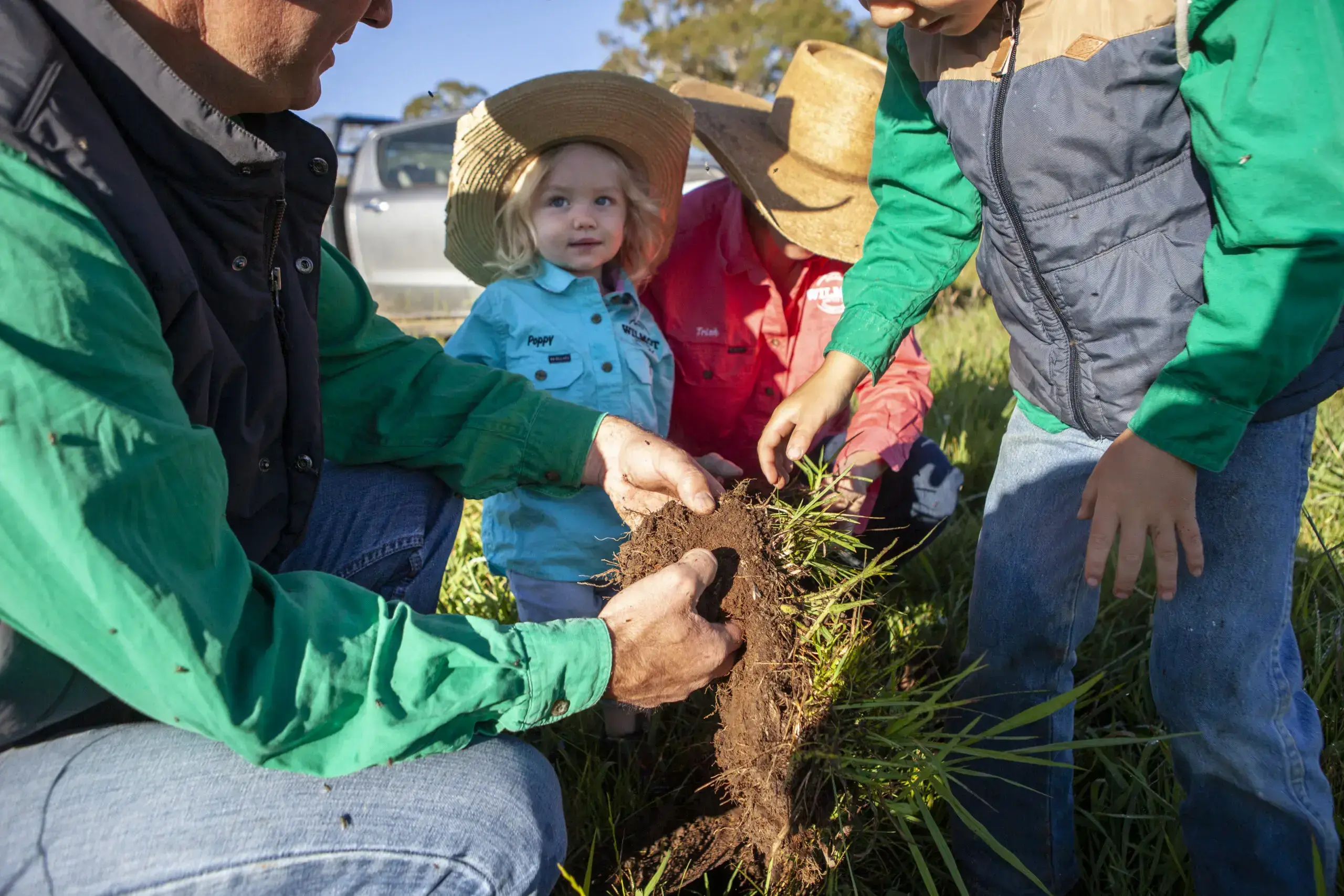
Photo credit: Mike Terry
The Result
“There’s nowhere near the production risk in the business, so there’s nowhere near the stress level… any of that stress that’s created by hard times is minimised”- Stuart Austin, General Manager, Wilmot
The time controlled grazing method has increased soil resilience and minimised the risk of soil loss and land degradation. This has resulted in less bare soil and more consistently available pasture, enabling Wilmot to finish their cattle as 100% grass-fed beef. The demonstrable improvements to soil condition have also allowed Wilmot to enter the carbon market, recently making a large sale of carbon credits to Microsoft.
The increased resilience of the landscape has resulted in reliable and resilient production and revenue. As a consequence, Alasdair, Stuart and his family have found great joy and security in restoring Wilmot’s spectacular landscape and are very optimistic about their farming futures.
Key Indicators for Wilmot
Key Ecological Indicators
After a stark loss of trees and shrubs in the decades before Alasdair purchased Wilmot in 2009, 143 ha of woody cover has since been restored fig. 1). Ground cover also performs well under the new management regime with Wilmot demonstrating ten times less bare soil cover in 2019 than the surrounding properties, despite low rainfall that year (fig. 2).
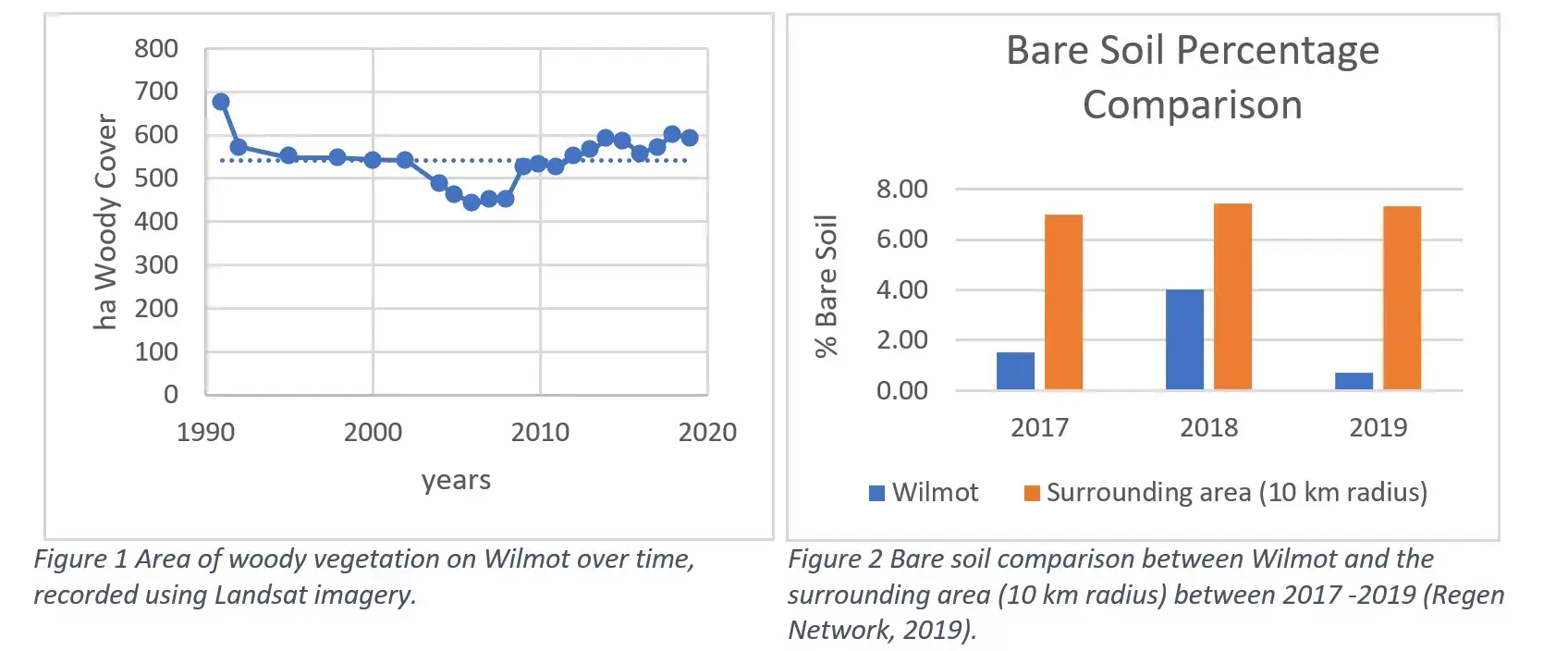
Key Soil Indicators
The strong structure and silty clay loam texture of the Wilmot soil allows for the movement and retention of water and nutrients, however the acidic soil pH (fig. 3) will prevent optimum microbial activity and nutrient cycling. These limitations are managed by liming and increasing soil carbon (fig. 4) and the general nutrient status of the soil through rotational grazing practices.
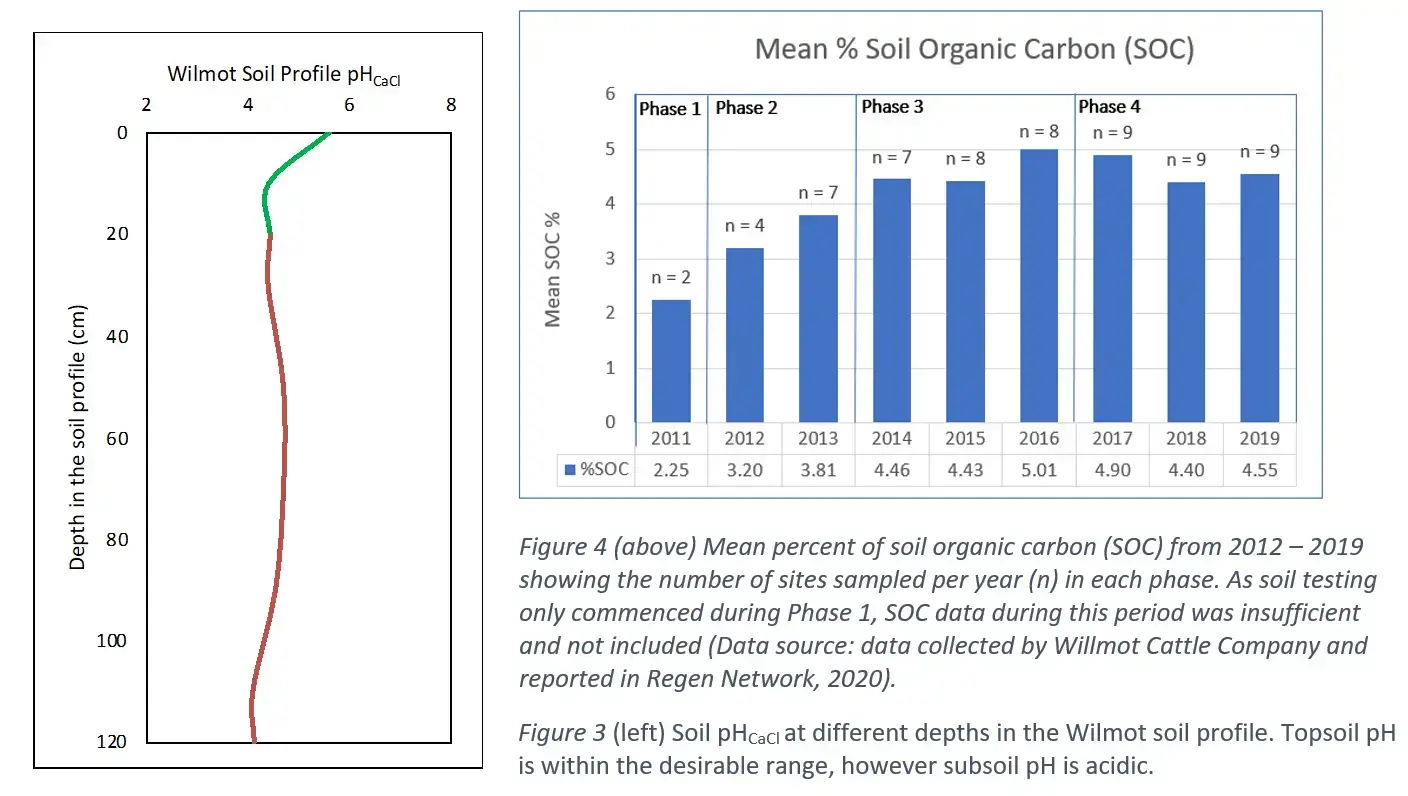
Key Economic Indicators
Business profit at Wilmot is more stable and significantly outperforms the ‘average farm’ index. Wilmot makes a profit in seven of the eight years analysed whilst the average farm makes a profit in only three of these years (fig 5). Over the whole period Wilmot has 6 times higher profitability than the Average Farm. This data does not include sales of carbon credits in 2020, which now add considerably to income.
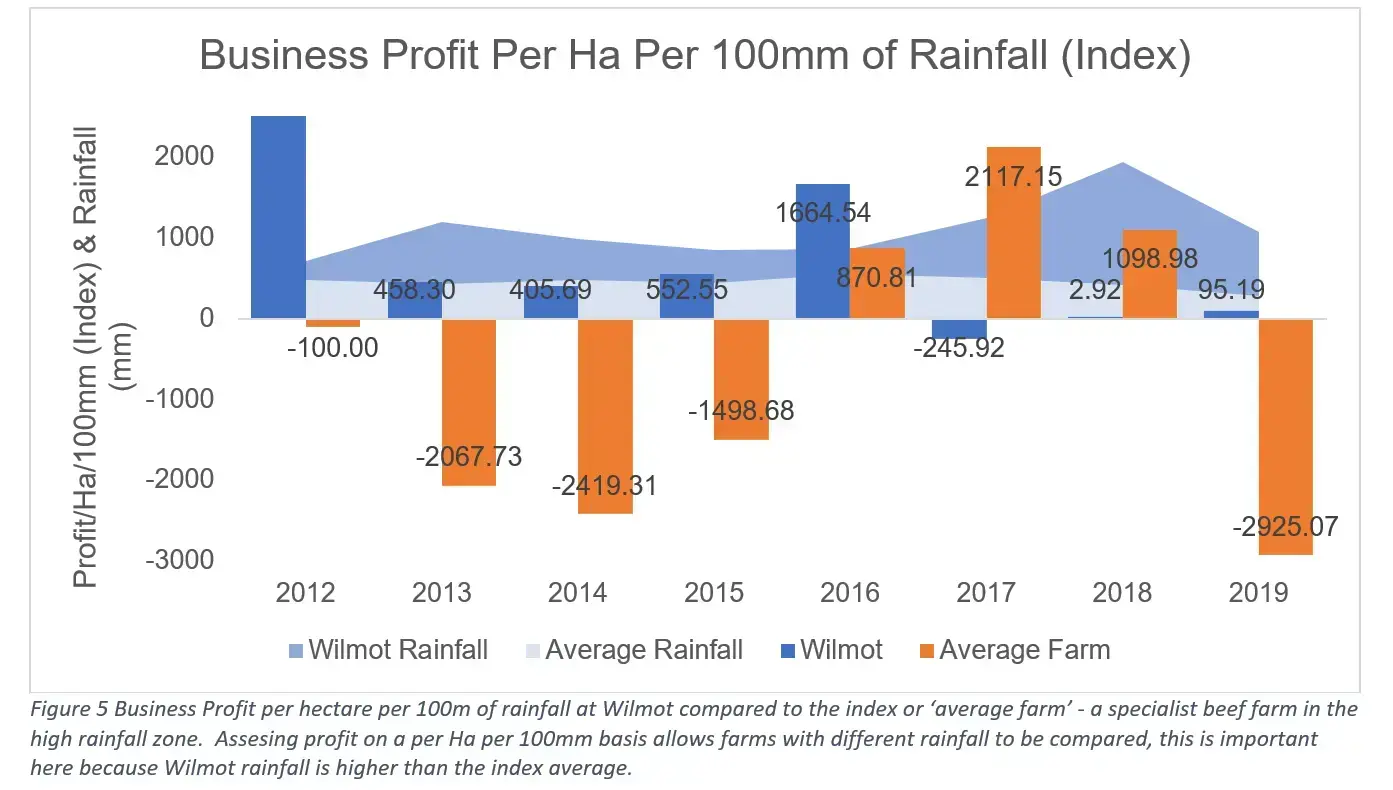
Key Social Indicators
The development of innovative management tools have improved Alasdair and Stuart’s ability to make good strategic decisions about farm management (fig. 7). This has improved the environmental, economic and social resilience of the enterprise and as a result Stuart and Alasdair’s perceived ability to cope with difficult conditions on the farm has increased dramatically (fig. 6).
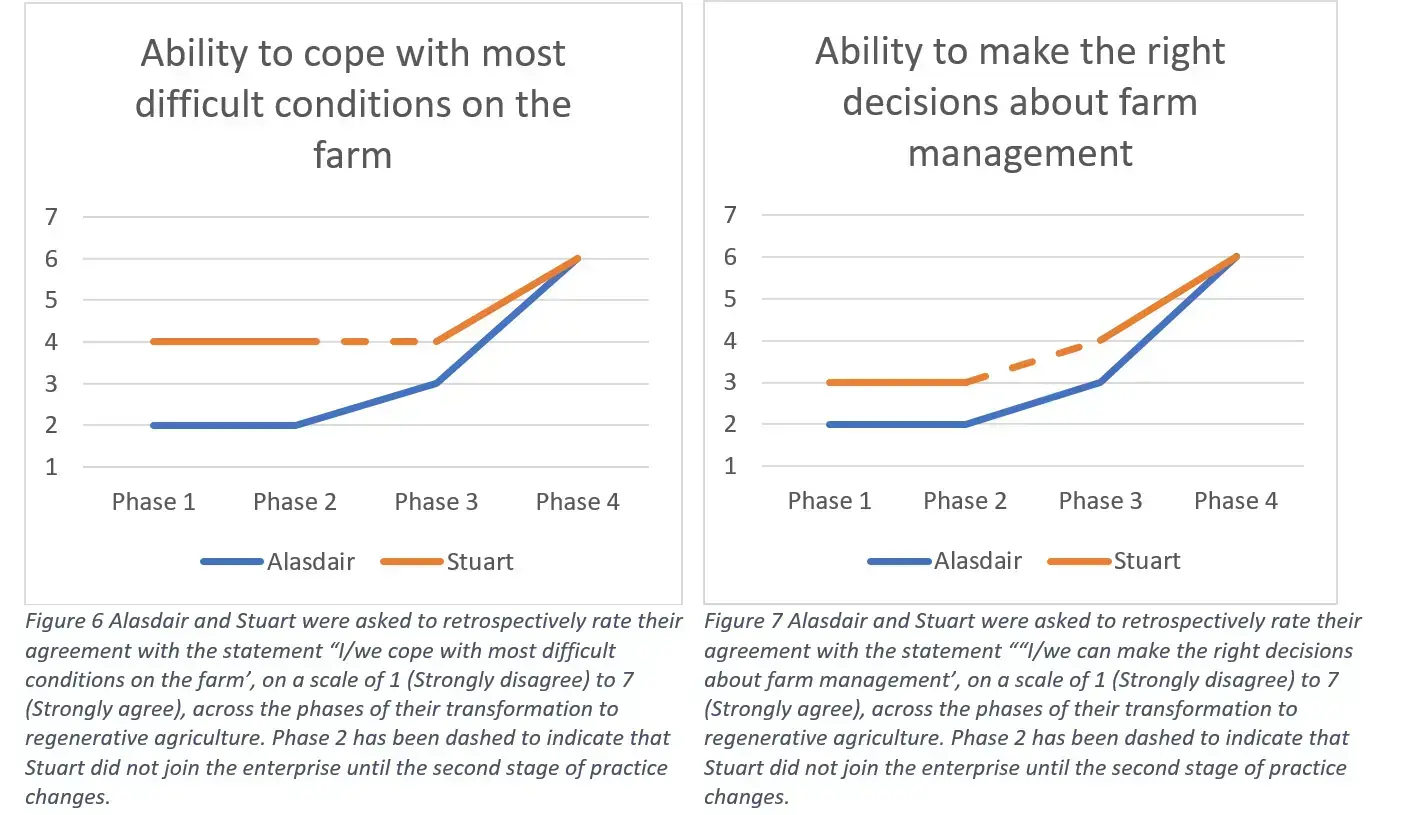
Conclusion
Wilmot successfully demonstrates the huge potential of well-managed grazing enterprises to improve natural capital, reliably deliver high-quality product and consistent revenue, and reduce the pain of the farming community during disasters such as bushfire and drought.
The combination of business savvy and on-ground experience has resulted in the development of innovative technologies such as the ‘Maia Grazing’ tool to strategically manage the enterprise and match cattle numbers to available feed. This has resulted in improvements to soil structure and quality as well as consistent ground-cover, enabling the cattle to be finished as 100% grass-fed beef. Associated increases in soil carbon also created new market opportunities in the form of carbon sequestration.
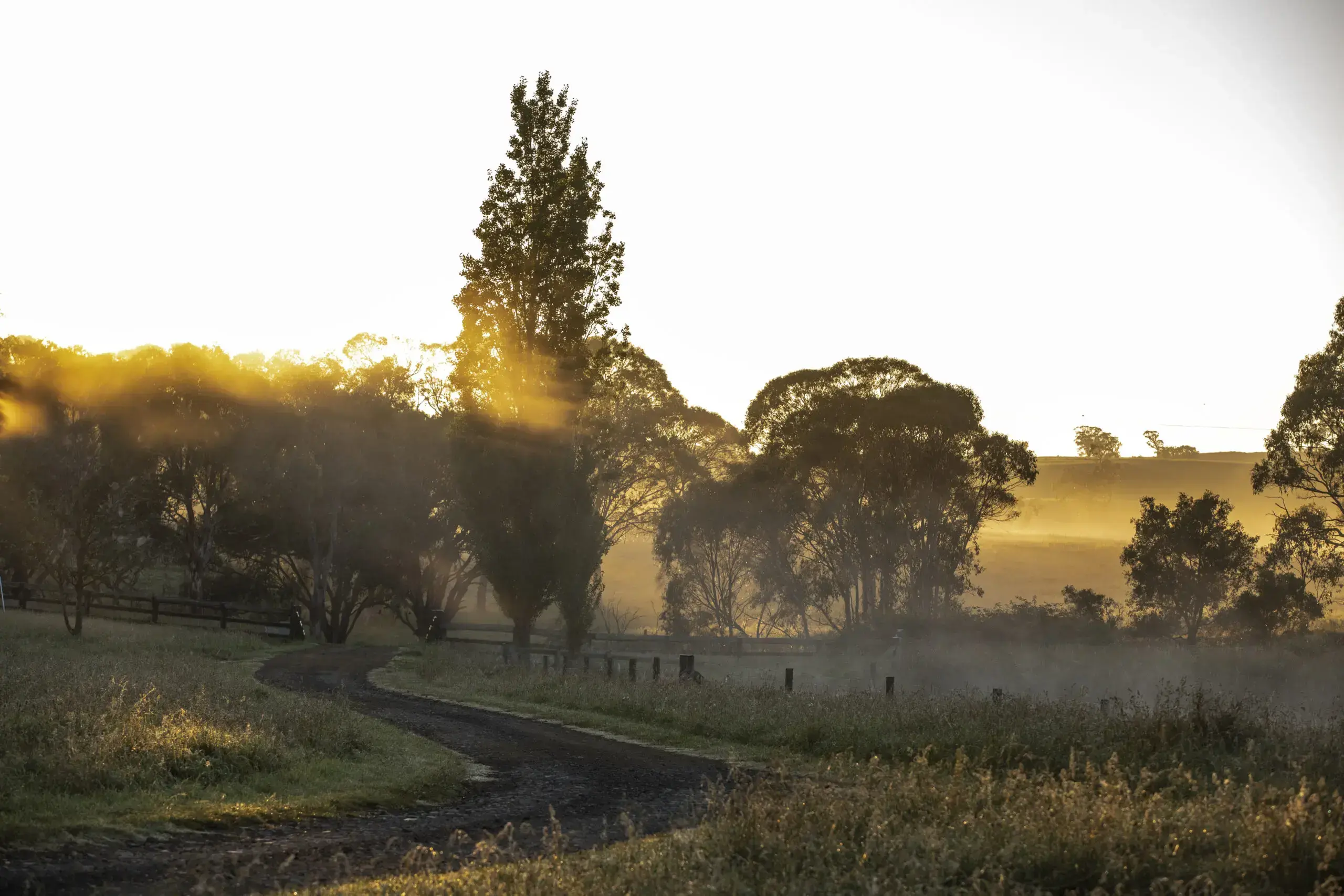
Photo credit: Mike Terry
Find out more
The Soils For Life case study program provides interwoven, evidence-based accounts of land manager and landscape change and regeneration. Further information about this case study including methods, detailed results and discussions can be found in the associated full reports:
SOILS FOR LIFE EXISTS TO SUPPORT AUSTRALIAN FARMERS IN REGENERATING SOILS AND LANDSCAPES: TO BUILD NATURAL AND SOCIAL CAPITAL AND TRANSFORM FOOD SYSTEMS. FIND OUT MORE ABOUT SOILS FOR LIFE OR OUR CASE STUDY PROGRAM HERE.
This project is supported by Soils for Life, through funding from the Australian Government’s National Landcare Program.




